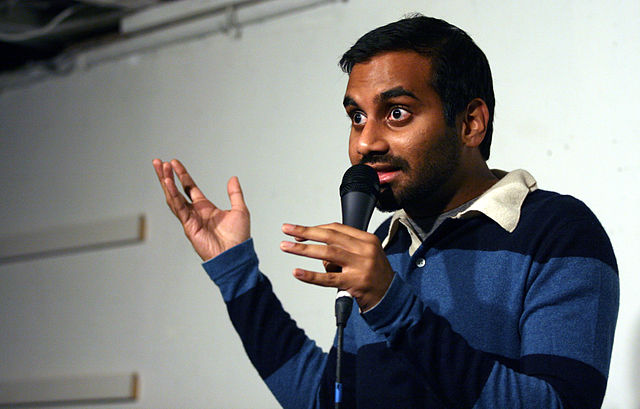For many young adults in the United States and around the world, romance is hard. With all the technology we have today, dating should be effortless. Apps like Tinder make finding love seem easy and fun, showing that we are constantly surrounded by hundreds of potential dates.
With all these exciting possibilities, why do so many us still feel like we’re hitting a brick wall in our quest for love?
This is precisely what Aziz Ansari investigates in his book Modern Romance (2015). Not merely Ansari’s hilarious musings on his own dating experience, he works together with sociologist Eric Klinenberg to give us concrete data to decode today’s dating scene.
One central component of Ansari’s analysis is the role of technology in all this craziness. Communication has been revolutionized by the smartphone. This technology presents its own unique set of benefits and challenges that singles simply didn’t have to worry about a couple decades ago, like sending an iMessage to a potential date only to find out they left you “on read.”
Aside from the effects of digital technology, Ansari describes how we have different expectations and goals for romantic relationships than our grandparents did. The sheer number of options that are available complicates this process.
No longer content to look for a kind guy or girl with a steady job, young adults are searching for their soul mate. Once they find this special person, it’s possible things might not get any easier, as people worry if they may eventually find someone more attractive or interesting than their current partner.
Although this entire process may seem overwhelming, Ansari ultimately conveys a hopeful image of modern romance. If we are putting so much effort and dedication into our search and relationships, we are bound to see results.
Modern Romance is a particularly important read for college students. On campus, the only type of “romance” most people talk about is the seemingly inescapable hookup culture. In this situation, the idea of finding someone with whom you could have a serious relationship seems almost impossible.
However, the extensive research presented by Ansari, which includes focus groups and interviews with leading experts in the field of love and relationships, demonstrates that we are not alone. Singles all around the world are experiencing similar struggles when it comes to finding love.
Ansari does a good job weaving together data, personal anecdotes, and jokes producing a book that is thoroughly enjoyable to read. More than just the entertainment value, Modern Romance is intriguing on a more thought-provoking level in its engagement with social sciences like sociology, psychology, and anthropology.
One significant drawback of this project, which Ansari notes in his introduction, is that it primarily focuses on the experiences of heterosexual, middle class people. Although this book may not cover the full range of human sexuality, Modern Romance still teaches a valuable lesson about love and relationships. Overall, if we really take the time to engage with and get to know people, not only will we learn more about them and ourselves, but we may also discover a deep, meaningful connection we had once thought impossible.





